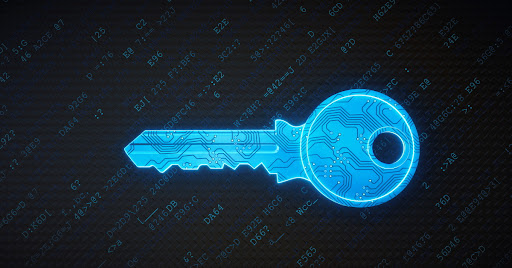
The hybrid and distributed workforce is at the heart of the modern business ecosystem.
<!–>
]–>
With businesses undergoing revolutionary change in the way they navigate delivering services and delighting customers, IT business leaders are tasked with waves of challenges that require agility and foresight.
As a dedicated partner of BMC, Blue Turtle is particularly interested in the evolving dynamics highlighted in a recent Hanover Research study. This study outlines the pressing need to synergise IT operations management (ITOM) and IT service management (ITSM), enabling organisations to unlock unheralded avenues of innovation.
The hybrid and distributed workforce is at the heart of the modern business ecosystem, ushering in a new paradigm of service requirements, delivery methods and support systems. However, a significant portion of IT teams find themselves grappling to keep pace, beset by escalating demands to roll out innovative services swiftly and cost-effectively. These demands are exacerbated by a proliferating distributed workforce that seems increasingly disconnected from the IT department, thereby engendering a widening gap in understanding and managing business transitions effectively.
Implementation costs remain crippling
In these tumultuous times and with many organisations still operating in silos, a staggering 42% of businesses pinpoint exorbitant implementation costs as a formidable obstacle, closely followed by concerns over antiquated IT infrastructure and the development of automated services.
We are at watershed moment! A remarkable 66% of respondents believe that IT is intimately familiar with line of business issues, yet 40% are wary of non-IT personnel’s unfamiliarity with robust change management procedures. A noteworthy 83% are strategising to implement change management programmes to avert suboptimal decisions that can derail organisational momentum.
Enter the role of ITSM and ITOM using AISM and AiOps
The silver lining, however, is noticeable in the increasing integration of ITSM and ITOM – a collaborative approach that is reaping dividends. A testament to this is the steady uptick in organisations centralising their ITSM and ITOM teams, which rose from 67% in 2020 to 73% in 2022. This integrative strategy facilitates an optimised incident management, problem management and service resolution system, with upwards of 60% leveraging it for these purposes.
But the journey doesn’t end here. A vast majority – 85%, to be precise – expressed a genuine belief in the potential benefits of a unified panorama across ITSM and ITOM processes. This amalgamation fosters seamless automation of processes and workflows, and it harnesses the potential of big data, AI and machine learning (ML) to deliver top-notch services while mitigating business risks effectively.
Digital still moving needles
Looking ahead, the strategic compass points towards an intensified focus on digital transformation, a priority echoed by 61% of infrastructure and operations (I&O) leaders in 2022, up from 52% in the preceding year. This transformation is no longer a luxury but a prerequisite in a world where the modern workforce demands fluid, consumer-like experiences and innovative solutions to enhance efficiency and productivity.
However, meeting these burgeoning demands is becoming arduous, with rising anxieties surrounding costs and technical intricacies eclipsing even data security concerns that dominated previous discussions. The immediate and urgent need is to transcend traditional ITSM and ITOM applications, which create knowledge silos and require extensive training, to embrace tools empowered with GenAI and ML capabilities. These tools will be instrumental in fostering intelligent automation and analytics, thus equipping IT teams to adeptly navigate the complex, fast-paced enterprise environment breaking silos.
Encouragingly, organisations are increasingly adopting the principles of integration and automation that have rendered DevOps a cornerstone of digital innovation. This shift towards a ServiceOps approach signifies a revolutionary convergence of ITSM and ITOM data, integrated with GenAI, DevOps and the transition to an autonomous digital enterprise (ADE). It seeks to revolutionise organisational culture, processes and technological platforms, offering real-time visibility, automation and intelligent collaboration across departments, thus laying the foundation for a competitive edge and market success.
Navigating the services employees need
As IT business leaders, this is an opportune moment to forge ahead with a clear vision, embracing the integrative potential of ITSM and ITOM as a potent catalyst for innovation and digital triumph. This approach, underscored by the findings of the Hanover Research survey and underpinned by BMC solutions, presents a robust roadmap and journey to navigate the complexities of today’s digital landscape, fostering innovation and enhanced user experiences through a ServiceOps approach that stands as the cornerstone of an ADE strategy.
In the world of digital operations, the term ‘ops’ is often added to various disciplines without a clear understanding of its meaning or value. This creates an opportunity to establish a connected digital operations practice, which can bridge the gap by providing a deeper, more integrated approach to operations across digital platforms. This would include:
- ConnectedDigitalOps
- ServiceOps
- AIOps
- DevOps
- DataOps
- AutonomousOps
With Blue Turtle, a seasoned BMC partner, we believe we can help you unearth the collaborative power of ITSM and ITOM tools enriched with AI and fine-tuned for the demands of the modern enterprise.
Join us on 1 March at the Auditorium, Saxon Hotel, for an event hosted by Blue Turtle. The “Shift in Operational Dynamics using AI” event guarantees an immersive experience as we explore the realm of digital service operations management. Register now to secure your spot.
Read the full report here.
